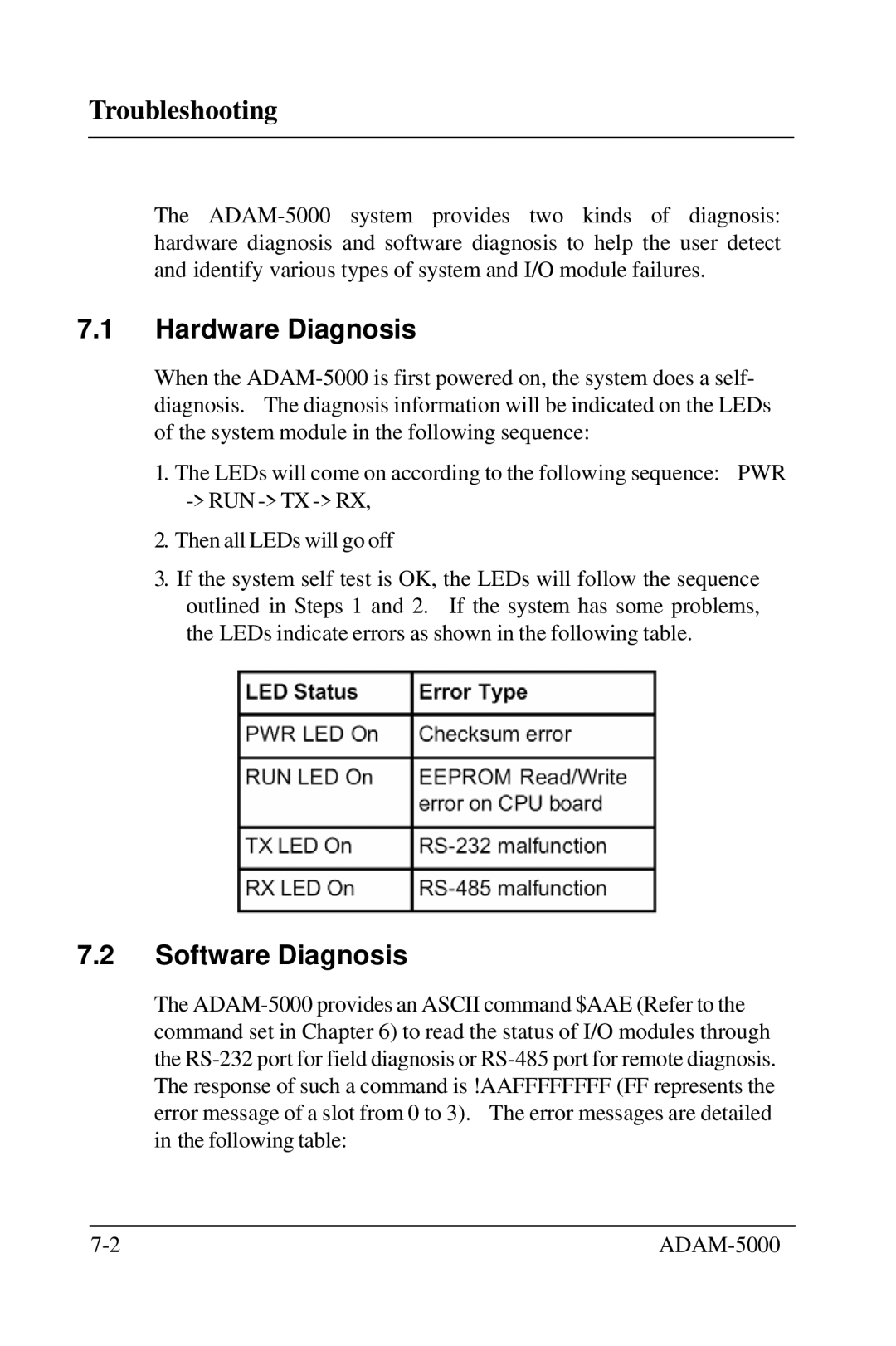Troubleshooting
The ADAM-5000 system provides two kinds of diagnosis: hardware diagnosis and software diagnosis to help the user detect and identify various types of system and I/O module failures.
7.1Hardware Diagnosis
When the ADAM-5000 is first powered on, the system does a self- diagnosis. The diagnosis information will be indicated on the LEDs of the system module in the following sequence:
1.The LEDs will come on according to the following sequence: PWR -> RUN -> TX -> RX,
2.Then all LEDs will go off
3.If the system self test is OK, the LEDs will follow the sequence outlined in Steps 1 and 2. If the system has some problems, the LEDs indicate errors as shown in the following table.
7.2Software Diagnosis
The ADAM-5000 provides an ASCII command $AAE (Refer to the command set in Chapter 6) to read the status of I/O modules through the RS-232 port for field diagnosis or RS-485 port for remote diagnosis. The response of such a command is !AAFFFFFFFF (FF represents the error message of a slot from 0 to 3). The error messages are detailed in the following table:

